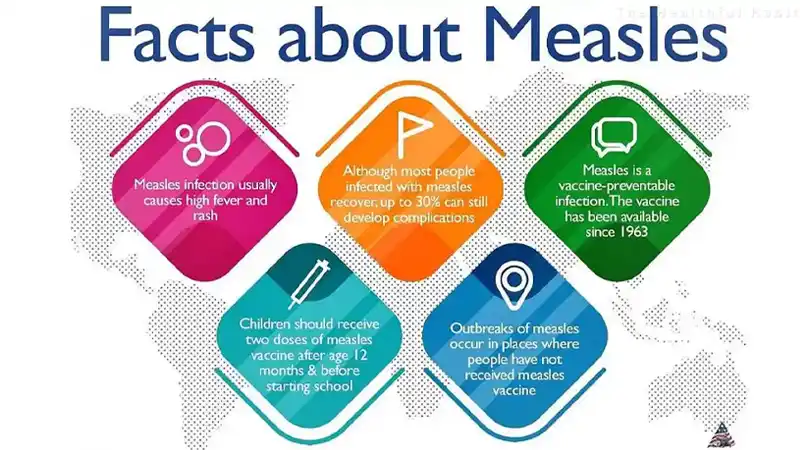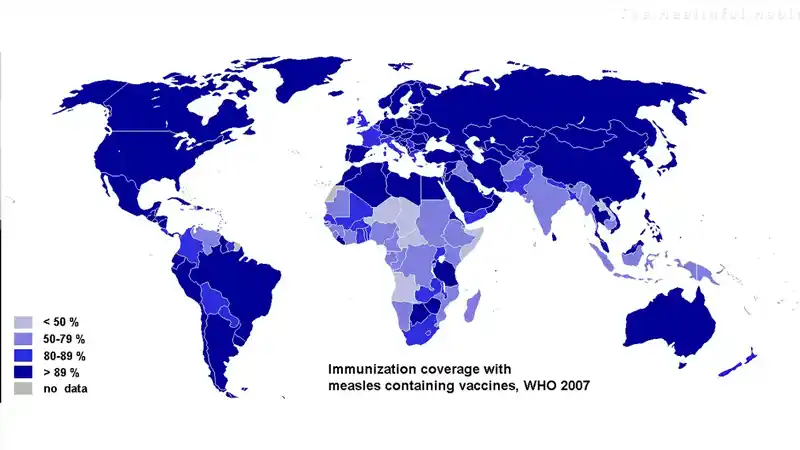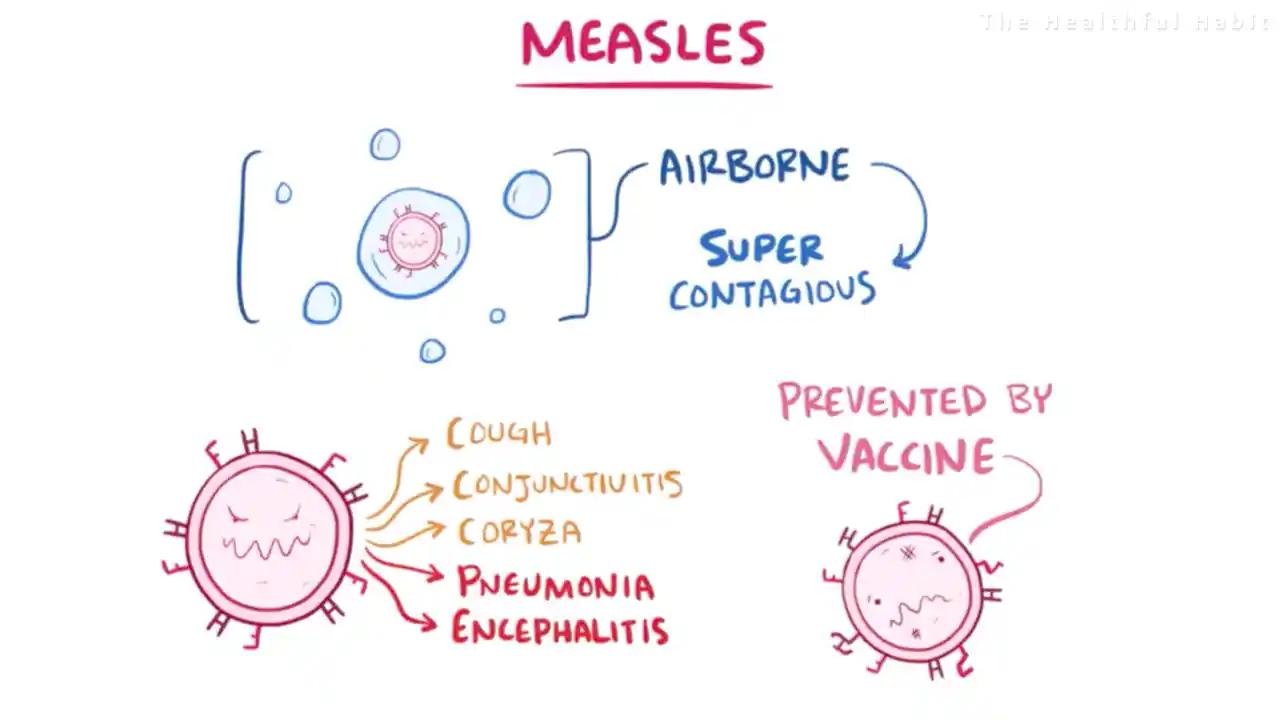Measles Is Back: What You Need to Know
Measles Resurgence: Essential Information for Protection and Prevention
Reading Time 8 minutes
Despite tremendous medical advances and widespread vaccination programs, measles—a disease with an effective vaccine available since 1963—has made an alarming comeback globally. This resurgence represents a significant public health concern that demands immediate attention and understanding.
The Concerning Global Comeback
Measles, once considered eliminated in many regions, has returned with concerning intensity. In 2023, the disease claimed approximately 107,000 lives worldwide, with the majority being young children—the most vulnerable population. According to the World Health Organization (WHO) and the Centers for Disease Control and Prevention (CDC), global cases increased by 20% compared to the previous year, with more than 10 million infections recorded.
Even nations that had previously achieved measles-free status are witnessing outbreaks. This unexpected reversal in public health progress has one primary cause: declining vaccination rates.
Understanding Why Measles Is Returning
The resurgence of measles directly correlates with decreasing immunization coverage. The WHO states that achieving herd immunity and preventing outbreaks requires at least 95% of the population to be vaccinated. However, recent years have seen this critical threshold threatened by:
- Widespread misinformation about vaccines
- Growing vaccine hesitancy among certain populations
- Disruptions in healthcare services
- Reduced access to routine immunizations
This decline in vaccination coverage has created vulnerable pockets within communities where the virus can gain a foothold and spread rapidly.
Measles: A Historical Perspective
Before the introduction of the measles vaccine in the 1960s, the disease was responsible for approximately 2.6 million deaths annually worldwide. The development and widespread implementation of the measles, mumps, and rubella (MMR) vaccine dramatically reduced these numbers. By 2000, the United States declared measles eliminated from the country due to successful vaccination efforts.
Unfortunately, decades of progress are now at risk. The reemergence of measles highlights the critical importance of maintaining high vaccination rates and combating misinformation.
Understanding Transmission: Why Measles Spreads So Effectively
Measles ranks among the most contagious pathogens known to medical science. The virus spreads through airborne transmission when an infected individual coughs, sneezes, or even speaks. What makes measles particularly dangerous is its remarkable environmental persistence—the virus can remain suspended and infectious in the air for up to two hours after an infected person has left the area.
The contagiousness of measles is quantified by its basic reproduction number (R₀) of 12-18, meaning a single infected person can transmit the virus to 12-18 susceptible individuals. In practical terms, if ten unvaccinated people are exposed to someone with measles, approximately nine of them will contract the infection.
Clinical Presentation: Recognizing Measles Symptoms
Measles infection develops systematically over approximately two weeks, presenting in distinct phases with increasingly serious manifestations.
Early Warning Signs (Days 1-3)
The prodromal phase typically begins 7-14 days after exposure and includes:
- High Fever: Temperature rapidly escalating to 104°F (40°C) or higher
- Respiratory Symptoms: Pronounced dry cough, nasal congestion, and runny nose
- Ocular Involvement: Conjunctivitis with redness, tearing, and light sensitivity
- Malaise: Pronounced fatigue and general discomfort
Diagnostic Indicator: Koplik Spots
A distinctive feature appearing 1-2 days before the rash:
- Small white or bluish-white lesions on the oral mucosa (typically inside the cheeks)
- Resembling small grains of salt against a red background
- Considered pathognomonic (definitively diagnostic) for measles
The Classic Measles Rash
The hallmark symptom develops on days 3-5:
- A maculopapular rash (flat, red areas with small raised bumps)
- Begins at the hairline and behind the ears
- Progressively spreads downward, covering the face, neck, trunk, and extremities
- Fully develops over 3-4 days
- Often accompanied by increased fever and worsening of other symptoms
Potential Complications: Beyond the Rash
Measles is not simply a childhood illness with a rash. It can lead to serious complications including:
Respiratory Complications
- Pneumonia (infection of the lungs)
- Bronchitis (inflammation of the airways)
- Laryngitis (inflammation of the voice box)
Neurological Complications
- Encephalitis (inflammation of the brain) occurring in approximately 1 in 1,000 cases
- Potential for permanent brain damage, intellectual disability, or death
- Rare but fatal subacute sclerosing panencephalitis (SSPE) developing years after infection
Other Serious Complications
- Severe diarrhea and related dehydration
- Otitis media (middle ear infection)
- Temporary immunosuppression, increasing vulnerability to other infections
- Pregnancy complications, including miscarriage and premature birth
Populations at Elevated Risk
Certain groups face significantly higher risks from measles:
- Infants under 12 months who are too young to receive the vaccine
- Pregnant women, who may experience severe illness and pregnancy complications
- Immunocompromised individuals with weakened immune systems
- Malnourished children, particularly those with vitamin A deficiency
- Adults who haven't been vaccinated, who often experience more severe symptoms than children
The Crucial Role of Vaccination
The MMR vaccine (measles, mumps, rubella) remains the most effective protection against measles. The vaccine works by introducing a weakened form of the virus, allowing the immune system to develop protective antibodies without causing disease.
- A two-dose series provides 93-97% protection against infection
- The MMRV vaccine (which also protects against varicella/chickenpox) offers similar protection
- Countries with robust vaccination programs have significantly reduced or eliminated measles
The Science Behind Vaccine Safety
One of the most damaging misconceptions about vaccines is the false claim linking them to autism. This myth originated from a fraudulent study published in 1998, which was subsequently retracted and discredited by the scientific community.
Extensive research conducted by the CDC, WHO, and numerous health organizations has conclusively found no connection between vaccines and autism development. Multiple large-scale epidemiological studies involving millions of children have consistently demonstrated vaccine safety.
The real danger lies in avoiding vaccination, which leaves individuals and communities vulnerable to preventable diseases like measles.
Protecting Yourself and Your Community
If TEN unvaccinated people are near someone with measles, get ready—NINE of them will likely GET INFECTED. The transmission rate is ASTONISHING!
If TEN unvaccinated people are near someone with measles, get ready—NINE of them will likely GET INFECTED. The transmission rate is ASTONISHING!
Since there is no specific antiviral treatment for measles once infected, prevention through vaccination is essential. You can help control the spread by:
Personal Prevention
- Ensure vaccination status is current: Check your immunization records and consult with healthcare providers if unsure
- Practice good hygiene: Regular handwashing with soap and water
- Protect vulnerable family members: Ensure everyone eligible in your household is vaccinated
Community Protection
- Stay informed: Rely on reputable sources like the WHO, CDC, and national health authorities
- Share accurate information: Help combat misinformation about vaccines
- Support vaccination initiatives: Participate in and advocate for community immunization programs
When to Seek Medical Attention
Contact a healthcare provider immediately if you or someone you know develops:
- High fever (above 104°F/40°C)
- Rash with worsening symptoms
- Difficulty breathing
- Persistent vomiting
- Signs of dehydration
- Altered mental status or extreme drowsiness
Early medical intervention can help manage symptoms and reduce the risk of complications.
Conclusion
Measles remains a highly preventable yet dangerous disease that has resurged due to declining vaccination rates. While it once caused millions of deaths annually, effective vaccines have saved countless lives. However, the recent increase in cases serves as a stark reminder that continued vigilance is necessary.
Public health depends on collective action—maintaining high vaccination rates protects not only individuals but also vulnerable community members who cannot be vaccinated. By ensuring that you and your family are fully immunized, you contribute to community protection against this highly contagious disease.
Frequently Asked Questions
1. How effective is the MMR vaccine?
The MMR vaccine is approximately 93% effective after one dose and 97% effective after two doses at preventing measles infection.
2. Can adults get the measles vaccine?
Yes. Adults who have not been vaccinated or are unsure of their immunization status should consult with their healthcare provider about receiving the vaccine.
3. Is measles dangerous for everyone?
While most healthy individuals recover, measles can cause serious complications, particularly in infants, pregnant women, the immunocompromised, and those with certain chronic conditions.
4. How long is someone with measles contagious?
Individuals with measles are contagious from about four days before the rash appears until about four days after it develops.
5. If I was vaccinated as a child, am I still protected?
Most people who received two doses of the MMR vaccine as children are considered protected for life. However, certain individuals may require a booster, particularly if traveling to areas with active outbreaks.
6. Can you get measles even if you've been vaccinated?
While breakthrough infections are possible, they are typically milder and less contagious than infections in unvaccinated individuals.
7. How can I protect my baby if they are too young to be vaccinated?
Ensure everyone around your baby is fully vaccinated, practice good hygiene, and avoid exposure to individuals with symptoms of respiratory illness.
8. What should I do if I've been exposed to measles?
Contact your healthcare provider immediately. If you're unvaccinated, receiving the MMR vaccine within 72 hours of exposure may provide some protection or reduce symptom severity.
9. Why do some parents choose not to vaccinate their children?
Vaccine hesitancy stems from various factors, including misinformation, philosophical beliefs, and concerns about side effects. However, extensive research consistently demonstrates that the benefits of vaccination far outweigh the risks.
10. Is the measles vaccine safe during pregnancy?
The MMR vaccine is not recommended during pregnancy as it contains live attenuated viruses. Women should wait at least one month after receiving the vaccine before becoming pregnant.
Legal Disclaimer: The information provided in this article by The Healthful Habit is for educational and informational purposes only. It is not intended to replace professional medical advice, diagnosis, or treatment. Always seek the guidance of your physician or another qualified healthcare professional before starting any new diet, supplementation, or exercise program, especially if you have a preexisting medical condition. The author and The Healthful Habit website do not assume responsibility for any actions taken based on the information presented in this blog. Individual results may vary, and what works for one person may not work for another.
Legal Disclaimer: The information provided in this article by The Healthful Habit is for educational and informational purposes only. It is not intended to replace professional medical advice, diagnosis, or treatment. Always seek the guidance of your physician or another qualified healthcare professional before starting any new diet, supplementation, or exercise program, especially if you have a preexisting medical condition. The author and The Healthful Habit do not assume responsibility for any actions taken based on the information presented in this blog. Individual results may vary, and what works for one person may not work for another.





